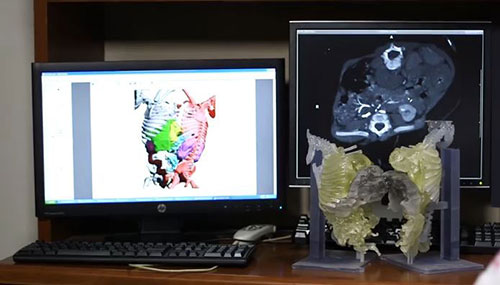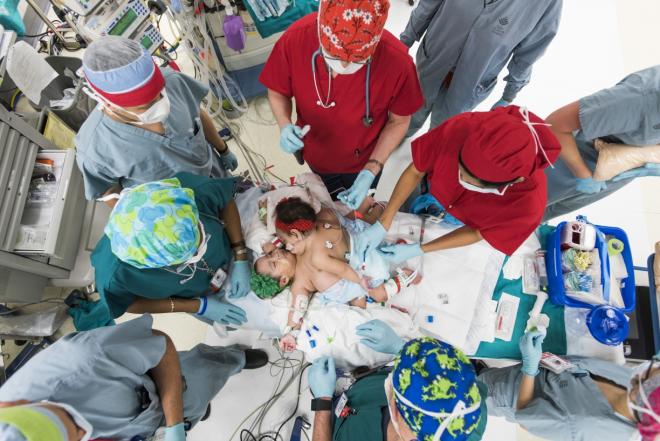3D printing technology is benefiting surgeons in several ways, whether is it transplantation of liver or fixing the broken ribs or face transplantation, where 3D printed surgical models were used to successfully plan the complex surgeries. According to the recent study presented at the annual meeting of the Radiological Society of North America (RSNA), doctors at the Texas Childrens’s Hospital were successful in separating the conjoined twins using detailed CT imaging and 3D printing technology.
Conjoined twins, Knatalye Hope and Adeline Faith Mata from Lubbock, were born on April 11, 2014, with a condition thoraco-omphalo-pyopagus in which they were connected from the chest to the pelvis. “This case was unique in the extent of fusion. It was one of the most complex separations ever for conjoined twins,” said Rajesh Krishnamurthy, chief of radiology research and cardiac imaging at Texas Children’s Hospital.
The Surgeons performed volumetric CT imaging with a 320-detector scanner to obtain detailed images of the twin’s internal organs. Intravenous contrast was given to each twin to get clear view of the organs and blood vessels the twins shared. To get a better view of the cardiovascular anatomy, the doctors used target mode prospective EKG gating to freeze the movement of the heart.
“The CT scans showed that the babies’ hearts were in the same cavity but were not fused,” Dr. Krishnamurthy said. “Also, we detected a plane of separation of the liver that the surgeons would be able to use.”
The results of CT imaging were used to construct a color-coded 3D printed model that could be assembled or separated during the planning of the surgery, with skeletal structures and supports 3D printed in hard plastic resin and organs built out of rubber like material. The livers were 3D printed in transparent resin with major blood vessels in white material for easier study. The model which was an exact replica of the actual anatomy not only helped the surgeons in planning the complex surgery but also helped the parents, Elysse and John Eric Mata, understand the surgical procedure.
The 26 hours surgery was performed on February 17 when the twins were 10 months old by a team of more than 26 clinicians, including 12 surgeons, six anesthesiologists and eight surgical nurses. In May 2015, Knatalyne Hope Mata returned home. Her twin sister, Adeline Faith Mata, was sent home in June 2015. Both are reported to be doing well.
“The 3-D printing technology has advanced quite a bit, and the costs are declining. What’s limiting it is a lack of reimbursement for these services,” Dr. Krishnamurthy said. “The procedure is not currently recognized by insurance companies, so right now hospitals are supporting the costs.”

